What’s a poor, freshly minted developer to do when they’re out of coding boot camp but don’t have any real-life experience? You step into the world of simulation. That’s the basic premise of what Wilco offers. Last week, I covered the company’s $7 million seed funding round, and the company’s CEO, On Freund, was gracious enough to let me use the deck the company created to close that round for my Pitch Deck Teardown series.
One of the things I love, love, love about the deck is that it — like the company’s overall design style — uses the Sierra-era games look. Specifically, it harkens back to the old 1980s and ’90s Space Quest games, and the company itself, Wilco, is apparently named after Space Quest’s main protagonist, Roger Wilco.
TechCrunch+ is having an Independence Day sale! Save 50% on an annual subscription here.
(More on TechCrunch+ here if you need it!)
It’s a particularly fitting name, given that Roger, in the Space Quest series, is a hapless but well-meaning “sanitation engineer” (i.e., janitor) who, more or less by accident, ends up rescuing the world time and time again. If you want to truly deep rabbit-hole into retro-tasticness, check out the excellent Space Quest Historian podcast. Because of course there is a podcast about the history of Space Quest.
Aaaanyway — sorry, my 8-bit nerd is showing, and nostalgia does occasionally get the better of me. Where were we? Oh, yeah, pitch decks and the tearing down thereof.
I’m always on the lookout for more pitch decks we can share with our TechCrunch readers.
We even put together a submission process of sorts. Here’s some more info about how to get involved.
Slides in this deck
Wilco’s seed deck is a 19-slide deck that ticks all of the boxes. The ink on the investment round article isn’t even dry yet, so the unredacted deck would be full of a lot of business-sensitive information; the Wilco team pointed out that it has made a few redactions for them to be comfortable sharing the deck. I’ve noted them in the list of slides below.
- Cover slide
- Team slide
- Problem slide
- “What’s happening today?” — Problem context slide
- Mission slide
- “Who are we” — Value proposition slide
- Solution slide
- “Wilco’s solution is customizable & adapts and connects to common tools” — Product slide
- “Scale vs. Customization” — Beachhead go-to-market slide
- “The Wilco Effect” — Product benefits slide
- “Product Experience” — Product screenshot (and demo, possibly?)
- Go-to-market slide
- Traction slide — Redacted: Monthly active users (graph of users over time)
- Traction slide — Redacted: Customer logos removed
- Traction slide — Redacted: Content partner/customer logos removed
- “What customers are saying about us” — Testimonial slide
- Competition slide
- The Ask slide — Redacted: Some numbers removed
- “Let’s talk!” — Contact info slide
Three things to love
I’ve already gushed about Wilco’s talent for graphics, but it seems as if the company’s talent goes deeper than that. The deck utilizes great storytelling craftsmanship. Here are a few highlights:
Benefits over features
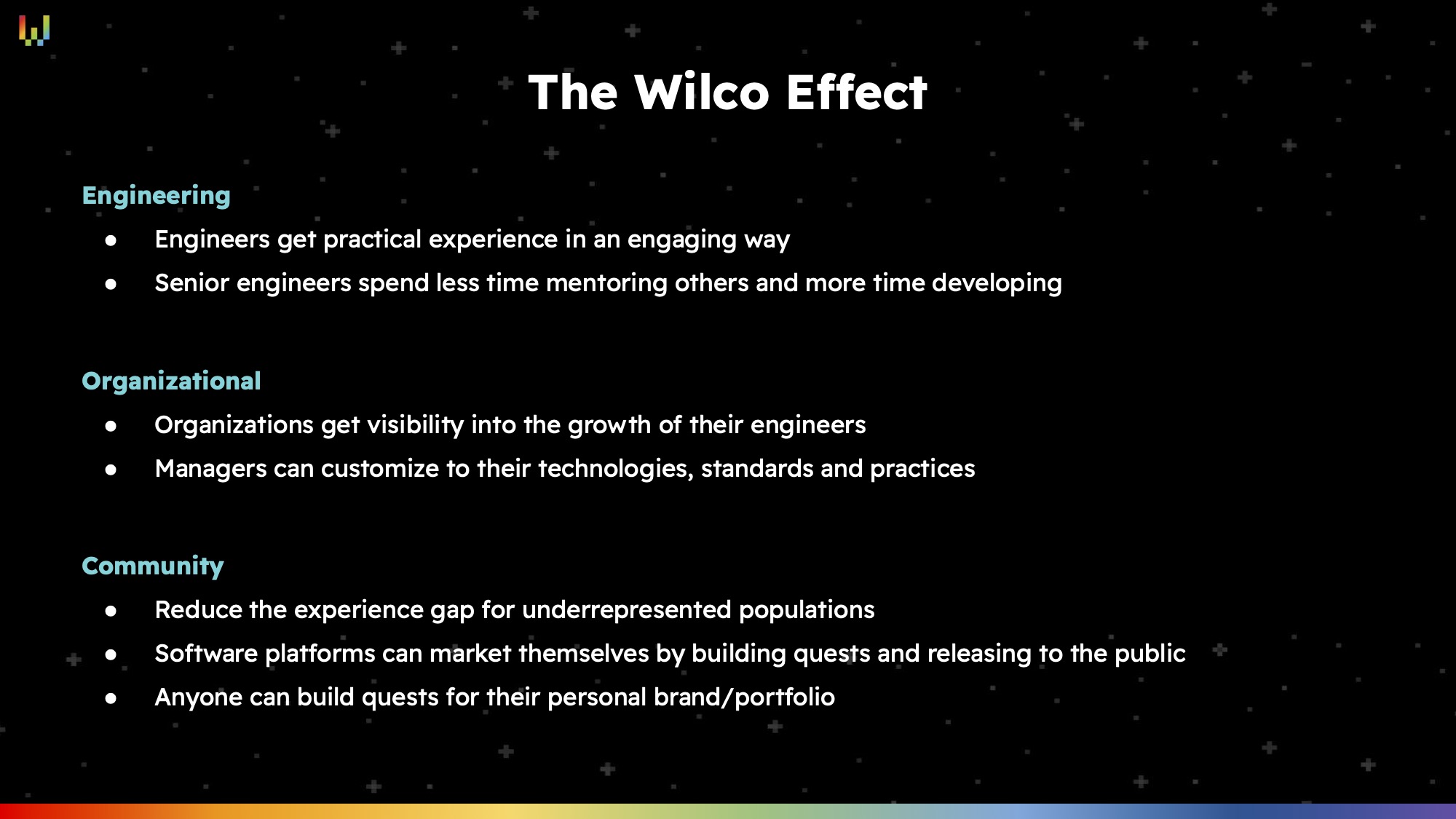
A lot of startups, and in particular ones with technical founders, fall into the trap of focusing too much on the features of a product, rather than its benefits. You see that in all sorts of places, but here’s an example: Nobody truly cares that a car has 400 miles of range; that’s just a number. Consumers (and, yes, investors, too) care how far you can go. In other words: The car can get you from Los Angeles to San Francisco without having to stop to charge or refuel. That’s benefits-driven storytelling, and it connects with your audience far better than whether a car has 380 or 420 miles of range.
On Slide 10, Wilco does an incredible job of just this; they call it “the Wilco effect,” but realistically, it’s benefits. Junior engineers get practical experience, senior engineers get more time back, management gets visibility into its human resource development and better control over training, and the broader community benefits in a number of ways.
The “how” will be important but risks the temptation of getting into more detail than what’s important for a pitch deck. The “what” is too tactical; for this part of the story, it doesn’t really matter what users need to do to gain these benefits. Focusing on the “why” is why this slide is so powerful; it opens the door to more in-depth conversations if needed, but the groundwork is there. I wish more startups got this right!
A beautifully crisp ask
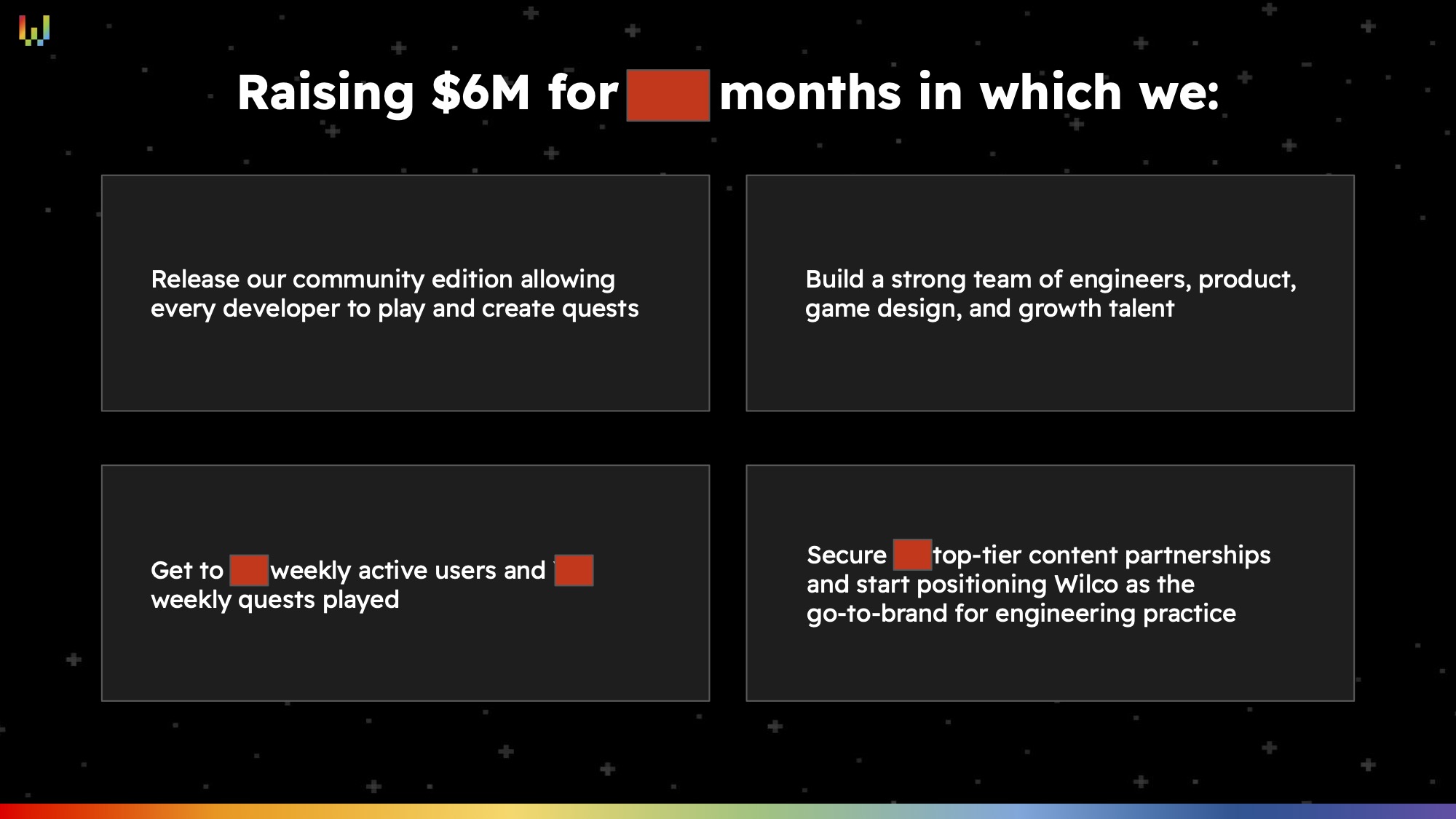
It’s excruciatingly rare to find an ask slide that actually does what it needs to do. When I saw this one — despite the redactions — I knew I had to feature Wilco, because it’s such a good example of how to do a great ask.
In the first box, the company talks about releasing a “community edition” that enables (not “allows,” but I probably care more about that than I should) developers to play and create quests. It isn’t specified anywhere in the deck what the feature set is here, so I’d expect there to be an appendix slide that shows a product road map of sorts. Nonetheless, it’s a clear goal.
In the second box, the company outlines its hiring plan. Of course, “strong team” is a little fuzzy; I’d have loved to see some numbers here, but it works.
In the third box, Wilco gets things ever so very right. “Get to X WAUs and Y weekly quests played” is a super clear SMART goal: It is specific and measurable; there’s no doubt whether the goal has been hit or not. The numbers are covered, so I have no way of knowing whether it’s achievable, but that’s the promise the company is making to its investors: Give us $6 million, and we’ll get it done. It’s relevant: Hitting that goal will unlock the next round of funding. And it’s time-bound, presumably “in the next 18 months” — more about that in just a moment. Brilliant. Bold. Yes. More of this — specific, clear, believable goals for what you’re going to achieve with your investments will go a long way toward securing faith in how your company is going to do between this fundraising round and the next.
In the fourth box, the company is setting some specific goals around its growth trajectory, with a number of partnerships it needs to land in order to facilitate future growth, expressed as a SMART goal.
I have one minor point that I’d love to have seen done differently here. I don’t know how many months of runway the company is raising for here, but I’d be willing to bet money that the red box covers the number 18. Why? Well, that’s pretty much the standard for a fundraise these days: You raise for 18 months and restart fundraising when there are six months of runway left.
Much less than 18 months and you don’t have enough time to get meaningful work done. Much more than that and you’re attempting clairvoyance into a timeline that is a little unrealistic. Besides, a lot of startups aim for 18 months, but then go hell for leather to try to hit the milestones earlier.
In a nutshell, you don’t raise money because you are running out of money as planned. You raise money because you’ve successfully delivered on the milestones and you need more money to go after your next set of milestones. In short: Don’t worry about putting the amount of time on your slide deck anywhere; it isn’t helpful, and it’ll show up as part of your operating plan and financial plans anyway.
Clearly framed problem
I usually just share one slide here, but slides three and four go together, so here’s a twofer for you:
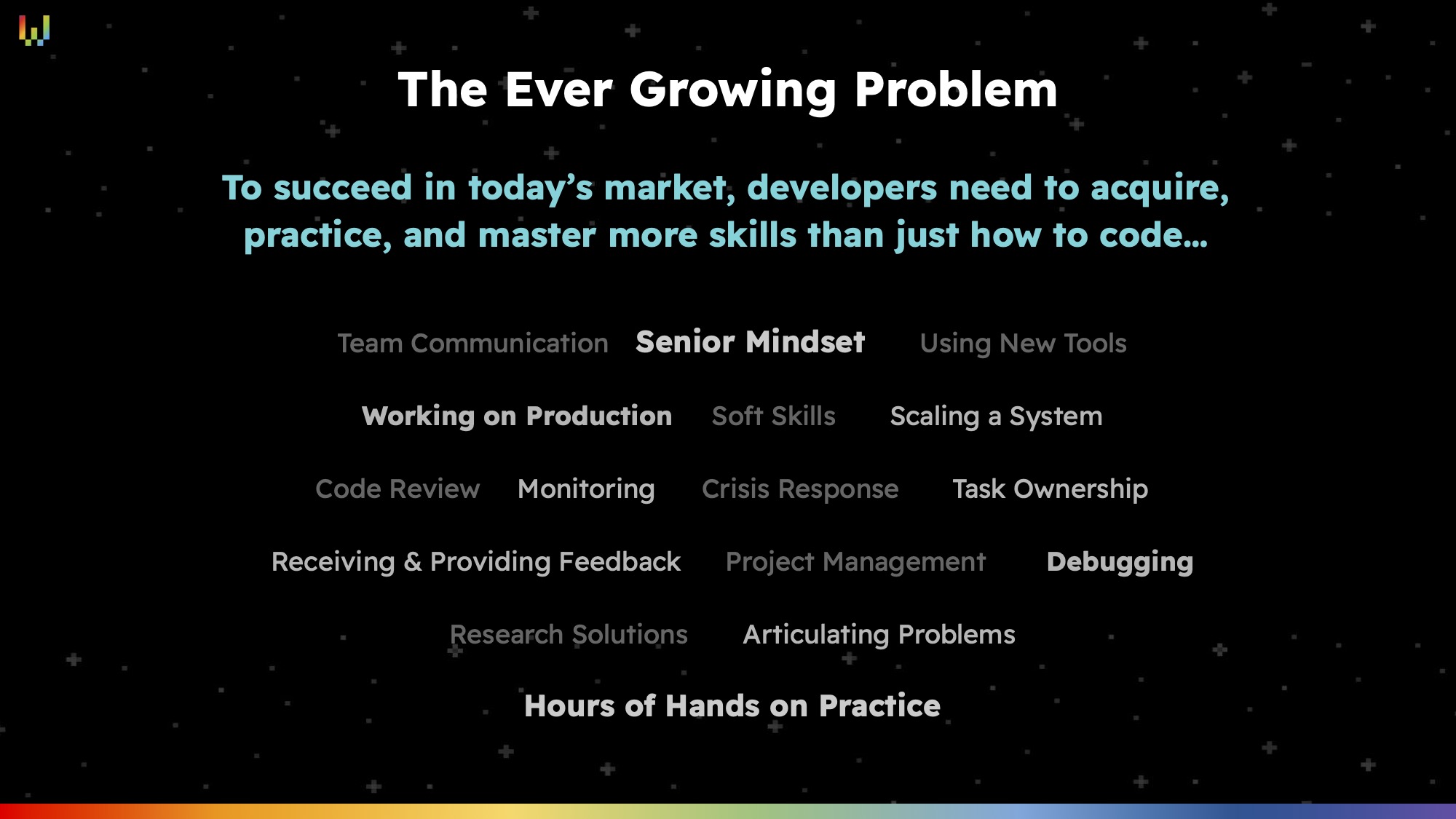
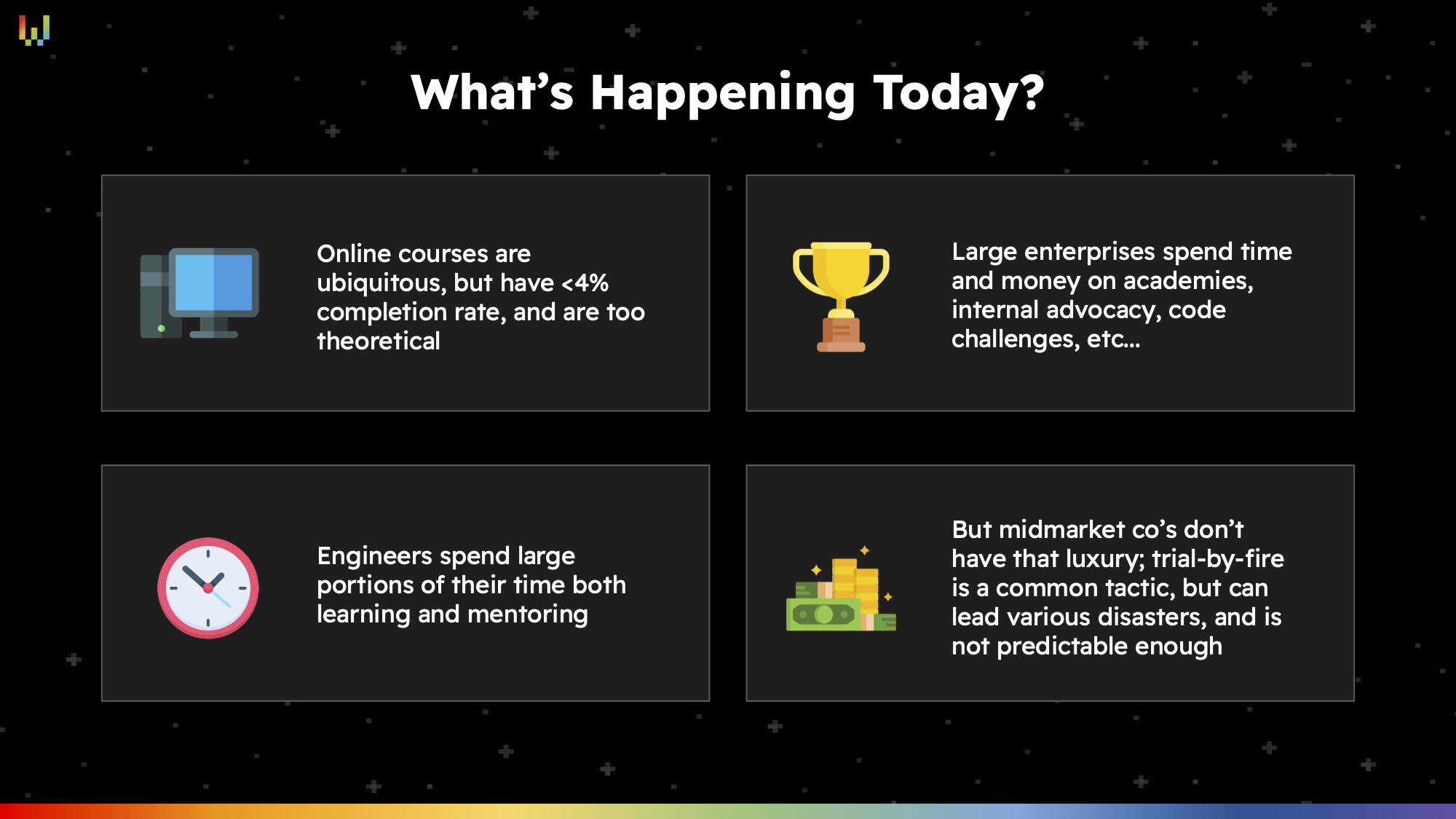
Did I mention that people have a temptation to get too technical and too nitty-gritty about the product in their slide decks? Yes, yes I did, in the first part of this teardown. Well, here’s another example of how Wilco perfectly dialed in. In slides three and four, the company is able to explain the problem in a succinct and clear way. The company highlights the shortcomings of theoretical education and explains what the impacts are across the business. In a world where developers are up there with some of the most expensive human resources, any bump in efficiency is a problem. Investors know this more than most; they see the budgets across their portfolios.
Even for someone who isn’t intimately familiar with the ins and outs of running a development-forward organization, Wilco’s value proposition is clear and easy to understand. Super impressive, given how many ways the company could have gotten this horribly wrong.
In the rest of this teardown, we’ll take a look at three things Wilco could have improved or done differently, along with its full pitch deck!
Three things that could be improved
Wilco did a damn fine job at putting together a tight deck that tells the story of its company and its hopes, dreams and ambitions really well. But it’s missing an operating plan, which makes it hard to ascertain exactly what the company is planning to do
GTM: Too much text, too little substance
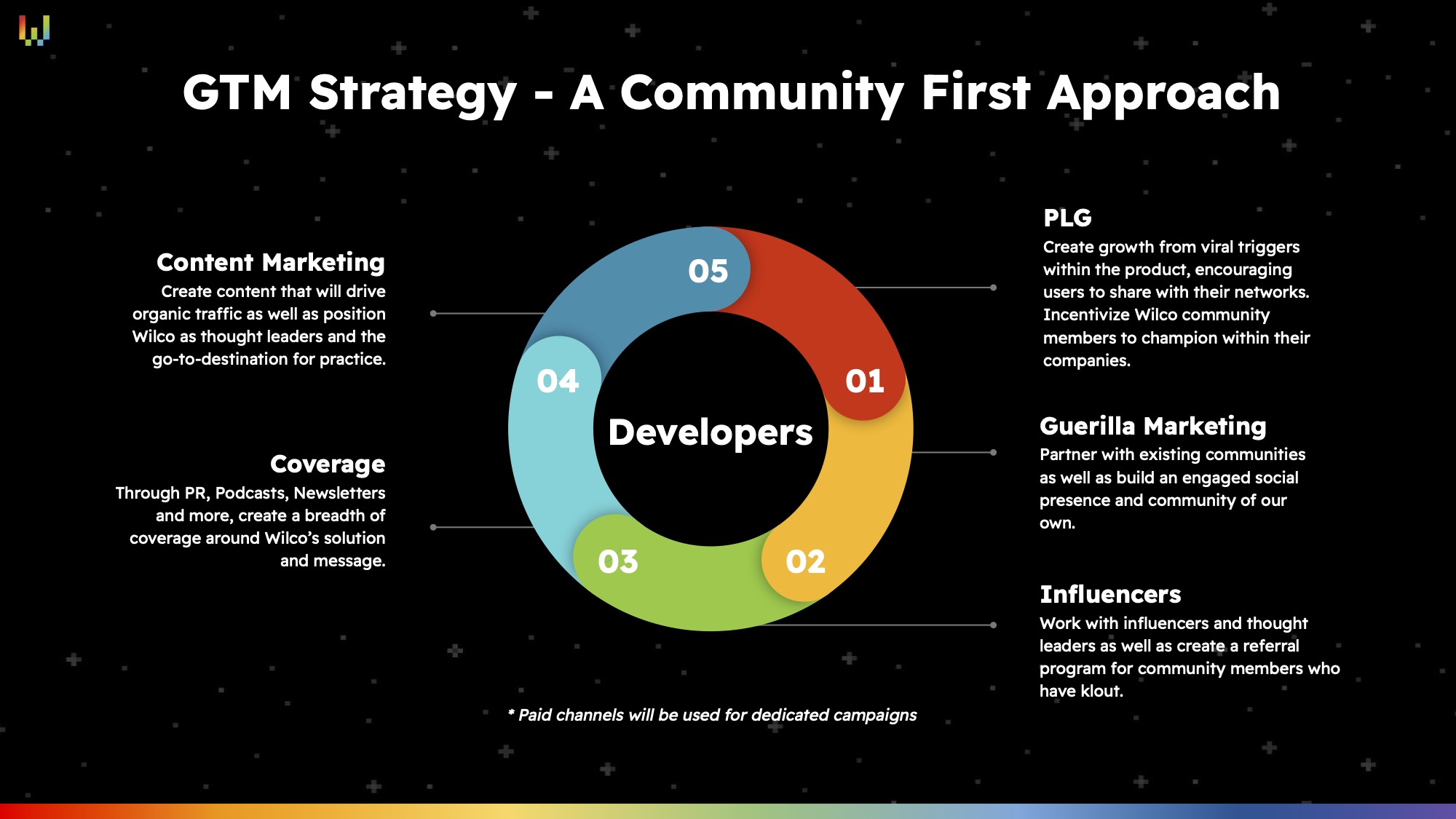
It might be a slightly churlish thing to call out Wilco for throwing too much text onto its slides, but it’s a common enough mistake that I think it might warrant a mention. As a general rule, if your text size drops under 20 on a slide, it’s time to step on the brakes. More words don’t mean more information; it means that if you throw the slide up in a meeting, you lose your audience for a few minutes as they read what’s on the screen, instead of listening to you. It’s a losing game.
There are a few things going on here that I’m not in love with. I had to google PLG (it stands for product-led growth); you can typically not rely on guerrilla marketing to build a user base unless you have extensive marketing experience (and even then, it’s a crapshoot). Content marketing is effective but slow, and “coverage” and “influencers” are red flags. If there was an operating plan, I’d make a mental note to check whether there’s a budget allocated to PR and influencer marketing and, if so, whether the budget seemed adequate to drive the amount of growth the company needed.
Now, I happen to know that Wilco does have a PR person working on the account (Hi, Gavriel!), but only because I worked with them to get the info I needed for the fundraising announcement last week. I wouldn’t have known from the investment deck, which is worrying.
The final shortcoming of this slide is in the smallest text on this slide: “Paid channels will be used” indicates that the company does have a plan for a scaleable growth strategy, but it doesn’t mention anything about the cost of acquisition. Perhaps that’s too soon for a company that has only just launched its product, but as an investor, this GTM slide essentially reads as … errrrr, we have no idea; we’ll figure it out later. If I were considering Wilco for an investment, I’d grill the founders extensively on this to assure myself that they know what they’re doing.
Erm, where’s the business model?
I can kind of forgive Wilco for not having an operating plan; presumably, the company has a financial model that showed up in front of its would-be investors as part of their fundraising conversations and due diligence; to a lot of early-stage companies, that might serve as an operating plan, too.
As I alluded to in the previous set of feedback, though, not having a customer acquisition cost or a lifetime value per customer gets complicated and not having an outline for a business model makes that worse. A startup’s ultimate goal is to make money; if you have no plan to do that, ideally with some numbers attached, it undermines the believability of the pitch.
One example of what that could look like is this example; the numbers don’t have to be 100% on the money (pun intended), but showing your work and your thinking helps. At least indicate who is going to be paying for the service; for Wilco, I can imagine the junior developers paying in order to upskill, content partners paying to get their tools in front of developers and companies paying to upskill their staff. With multiple viable business models, it helps to spell out your current thinking!
Nice try, but you can’t get away with not sizing the market
I know, I know, Wilco successfully raised money so it’s likely they did get away with using this deck. However, trust me on this: At some point during the fundraising process, someone scratched their head and thought about market sizing. The investors either went “yep, there’s a ton of developers, so we don’t need to size this market” or sat Wilco’s founders down and forced them to size the market somehow.
Even if it’s “really obvious” that the market is big — “We target everyone who owns a mobile phone!” — or if the market is excruciatingly hard to size, you need to at least include a slide that shows how you think about your market sizing. It’s 2022; you can’t forget to include a top-down (typically expressed as a TAM/SAM/SOM) or bottom-up market sizing calculation.
I get it; market sizing is an imprecise art and a massive PITA to boot, but even if you are miles off from what the actual market size is, the way you describe your market calculations is a helpful signal you can send to your investors; it shows how you think about your growth potential and the way you might approach growing into adjacent markets in the future.
The full pitch deck
If you want your own pitch deck teardown featured on TC+, here’s more information. Also, check out all our Pitch Deck Teardowns and other pitching advice.
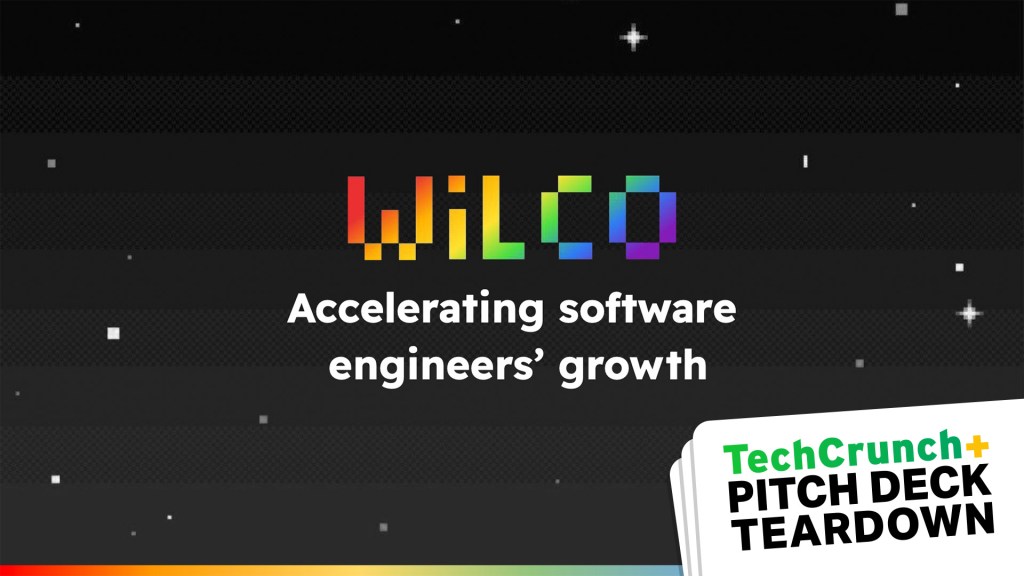






























Comment